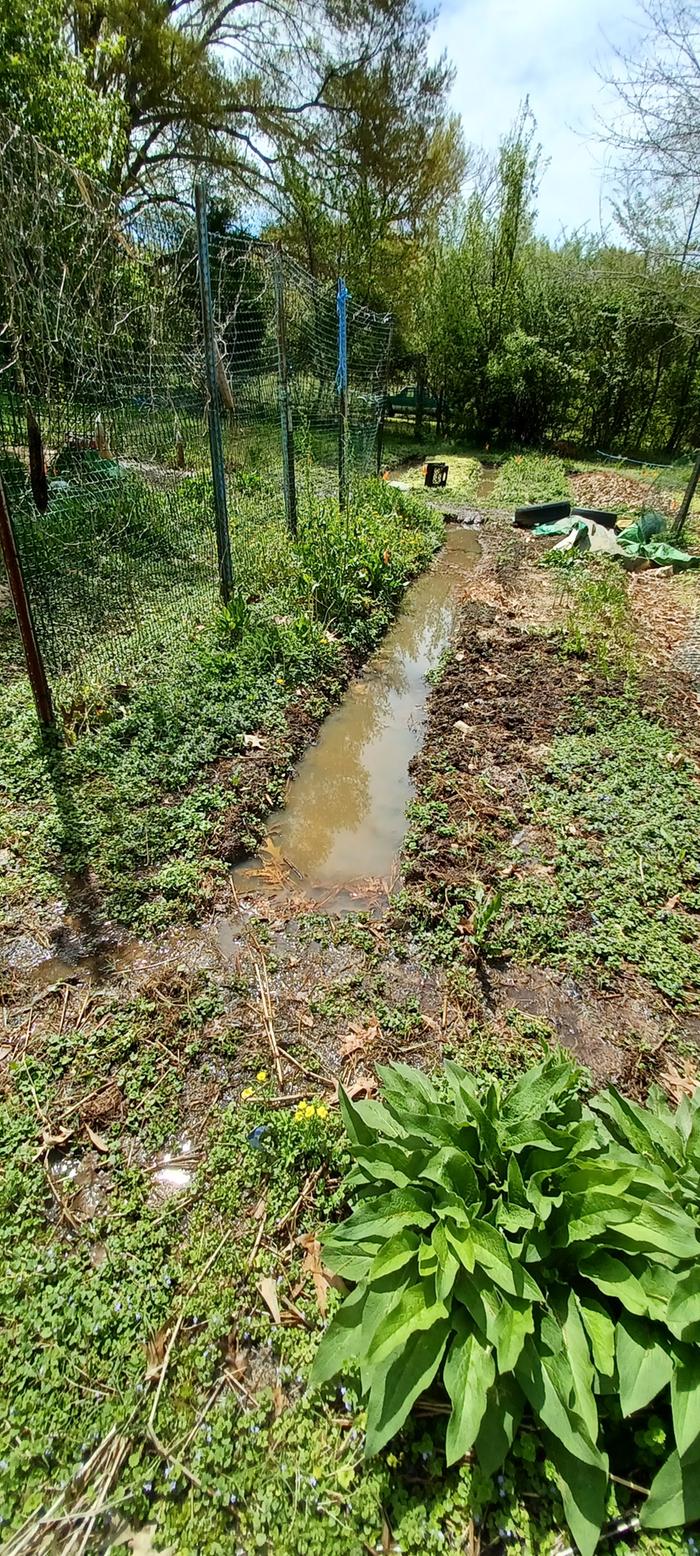




It's my space, my mess.
If you don't like it, don't come in.




This is all just my opinion based on a flawed memory





Invasive plants are Earth's way of insisting we notice her medicines. Stephen Herrod Buhner
Everyone learns what works by learning what doesn't work. Stephen Herrod Buhner




Anne Miller wrote:Something that dear hubby and I did every year after buying our first house was to have a load of sand brought in. We lived there 2 1/2 years and that was our spring routine every year.
If I wanted to do something now I would call up my local dirt hauler and have a load of sand brought in. If I could have them dump it in those spots I would do that though probably those spots may not be accessible with a big truck so I would use a wheel barrel to put sand in different locations.




Weeds are just plants with enough surplus will to live to withstand normal levels of gardening!--Alexandra Petri




Ben Zumeta wrote:This is one reason I built raised nursery beds atop bedrock, .
It's my space, my mess.
If you don't like it, don't come in.




Kris Nelson wrote:
Is sand really a good option to put over clay? No risk of making "concrete" as I've read warnings about? Is that only if you mix/till it, while just laying it on top creates a good drainage layer between the eventual organic layer above the sand?
On top of the sand you want to create an organic layer or bring in some quality growing soil so that you can grow stuff, right?
It's my space, my mess.
If you don't like it, don't come in.
 1
1




Anne Miller wrote:
When the weather is better and I could get out into those areas I would collect any leaves I could find, from whatever source is available. Then I would start filling those areas with those leaves. On top of those leaves, I would put wood chips to keep them from blowing away. Over time the leaves will break down and turn into finished compost aka leaf mold aka black gold.
I understand that you are wanting to do something now.
It's my space, my mess.
If you don't like it, don't come in.
 1
1




This is all just my opinion based on a flawed memory

 2
2




Ben Zumeta wrote:
I sympathize with your preference for a natural look, and on flat ground I generally do not frame raised beds. I have also built a lot of terraces and effectively terraced raised beds working along the contour on slopes with local native materials like rock and tree trunks as the frame holding up the soil, which I am afraid is the only way I know how to really mitigate your drainage problem. I did a lot of trailwork in my younger days and this has informed my techniques and aesthetics, which rarely include straight lines.

It's my space, my mess.
If you don't like it, don't come in.




Loretta Liefveld wrote: I prefer using organic matter.
Invasive plants are Earth's way of insisting we notice her medicines. Stephen Herrod Buhner
Everyone learns what works by learning what doesn't work. Stephen Herrod Buhner
 3
3





'What we do now echoes in eternity.' Marcus Aurelius
How Permies Works Dr. Redhawk's Epic Soil Series




Joylynn Hardesty wrote:Here's a thought, dig temporary ditches on either side of where you want to plant. I have areas that were so wet in spring that anything transplanted there would rot. This spring the water is in my new dug out paths. Maybe dig rings around the planting spot, near the projected canopy of the two year old size, allow the water to drain enough. Once things dry out a bit, fill in your trenches with sticks and the dug out soil for mini hugle kultres. The rings may hold more water where you need it during your dry season.
I dug portions of these paths while my clay was sopping wet. I put the dug soil in reclaimed pots, and set them under my porch. Time passed, the so drained without forming the cement clods that happens in my garden.
It's my space, my mess.
If you don't like it, don't come in.












'What we do now echoes in eternity.' Marcus Aurelius
How Permies Works Dr. Redhawk's Epic Soil Series
 2
2









Invasive plants are Earth's way of insisting we notice her medicines. Stephen Herrod Buhner
Everyone learns what works by learning what doesn't work. Stephen Herrod Buhner




Anne Miller wrote:When we had our homestead, the soil was called "black gumbo", it was horrible to try to walk in it after a rain.
What I really found helpful was a pair of rubber boots,
I would like to suggest a boardwalk or a log walk
Even leaves or mulch, if mulched heavily might work well:
It's my space, my mess.
If you don't like it, don't come in.
 1
1




Loretta said, "OMG - I have a pair of those, and they do keep your feet dry, but the mud clumps to the bottom of them until your walking on stilts, or those 'platform shoes' so popular in the 70's.
Invasive plants are Earth's way of insisting we notice her medicines. Stephen Herrod Buhner
Everyone learns what works by learning what doesn't work. Stephen Herrod Buhner

|
Why is your dog always so ... moist? Check this tiny ad for some sort of cure:
Learn Permaculture through a little hard work
https://wheaton-labs.com/bootcamp
|


